Ensuring safety is paramount when considering the placement of a fire pit near residential structures. Let’s delve into the factors to be considered in order to find the optimal distance.
As we explore these guidelines, it is important to keep in mind the potential risks associated with improper fire pit placement.
Key Takeaway:
- Regulations on Residential Fire Pits: It is important to be aware of local regulations regarding the installation and use of fire pits. These regulations may dictate the distance that a fire pit should be from a house, property line, and other structures.
- Fire Pit Distance From House, Property Line, and Other Structures: The specific distance requirements for a fire pit can vary depending on local regulations. However, a general guideline is to keep the fire pit at least 10 to 25 feet away from any structures, including houses, fences, and trees.
- Type of Fire Pit: The type of fire pit being used can also impact the required distance from a house. For example, an above-ground fire pit may have different distance requirements compared to an in-ground or built-in fire pit. It’s important to consider the specific design and features of the fire pit.
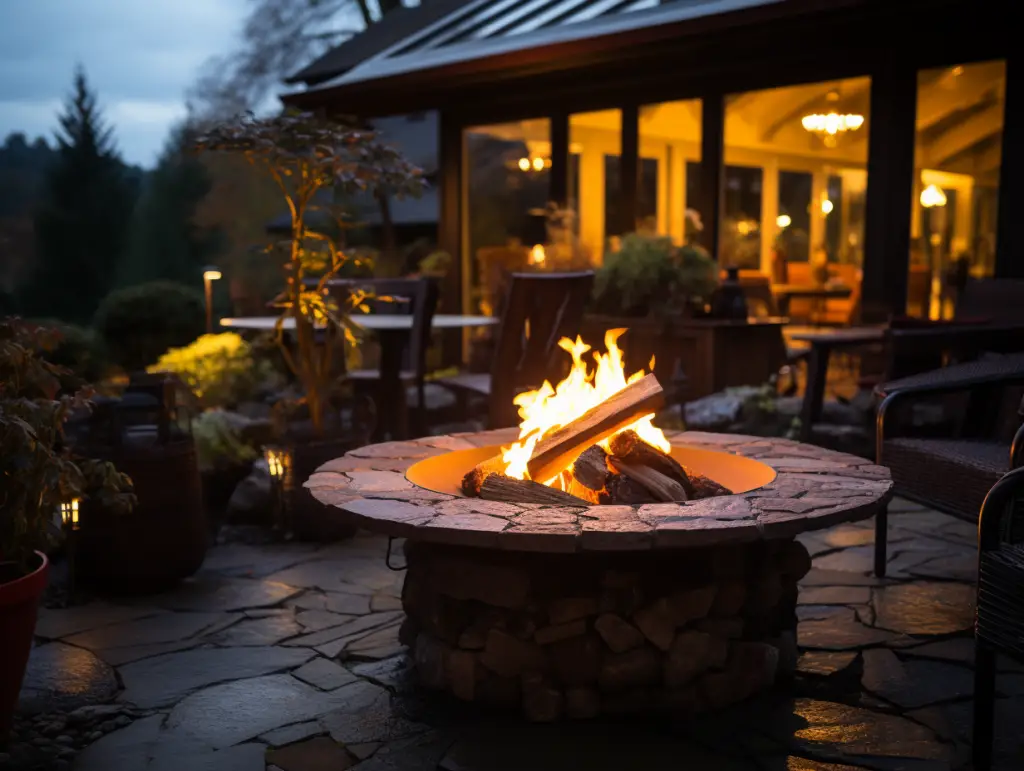
Regulations on Residential Fire Pits
Regulations Surrounding Residential Fire Pits:
Residential fire pits must adhere to specific guidelines to ensure safety and prevent potential hazards. It is crucial to consider the positioning of fire pits in relation to houses. Local rules often stipulate that fire pits should be a certain distance away from residential structures.
This distance helps minimize the risk of fire spreading to nearby buildings and ensures the safety of individuals and their properties. These regulations promote responsible use of fire pits, preventing accidents and protecting communities.
Being aware of and following these regulations is essential to ensure a safe and enjoyable experience with residential fire pits.
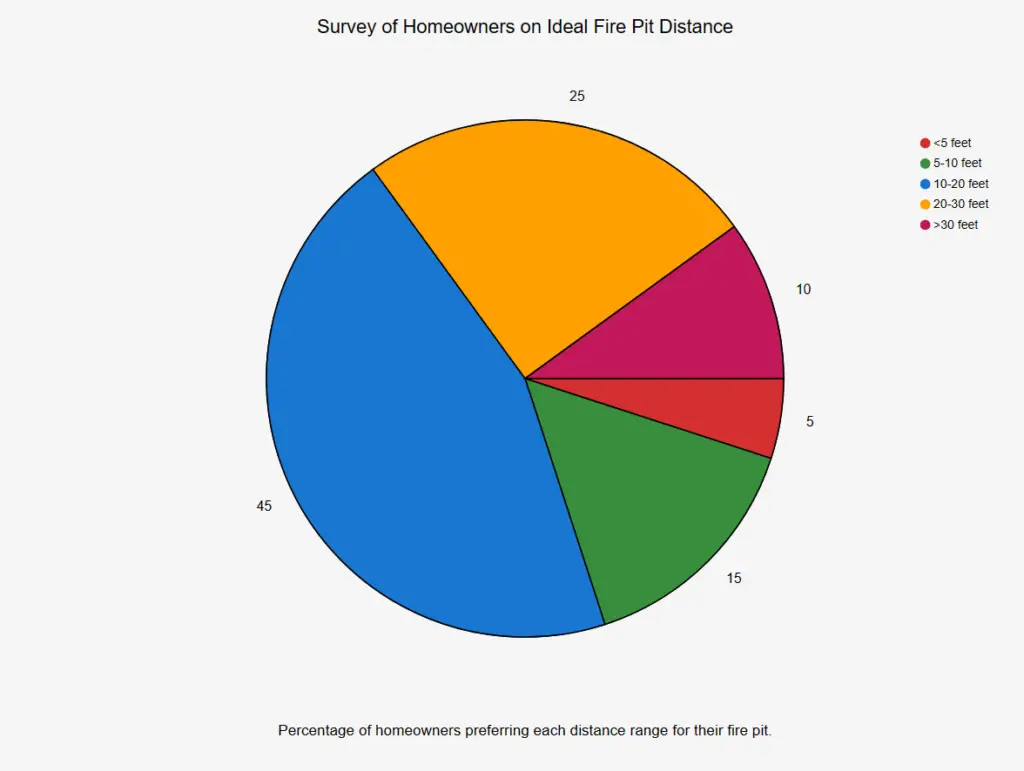
When it comes to regulations on residential fire pits, it is important to understand the specific requirements in your area. By doing so, you can ensure compliance with all necessary guidelines. These regulations aim to maintain safety standards and protect residents from potential fire hazards.
Understanding the appropriate distance between a fire pit and a house is crucial to prevent accidents and mitigate risk. Local authorities enforce these regulations to safeguard communities and ensure that residents can enjoy their fire pits responsibly and without compromising safety.
Furthermore, it is essential to note that regulations on residential fire pits go beyond just the distance from a house. Other factors, such as the type of fuel used, the construction of the fire pit, and the availability of fire-retardant materials, may also be subject to regulation.
These additional details serve to further enhance the safety measures surrounding residential fire pits. By complying with all aspects of these regulations, individuals can minimize the risk of accidents and promote responsible use of fire pits in residential areas.
For a seamless and enjoyable experience with residential fire pits, it is crucial to stay informed about the regulations in your area. Failure to comply with these guidelines can result in fines, penalties, and even the prohibition of using fire pits altogether.
Therefore, it is imperative to do thorough research and consult with local authorities to ensure compliance. By adhering to the regulations on residential fire pits, individuals can create a safe and enjoyable environment for themselves and their neighbors, providing peace of mind and avoiding the fear of missing out on this popular recreational activity.
Fire Pit Distance From House, Property Line, and Other Structures
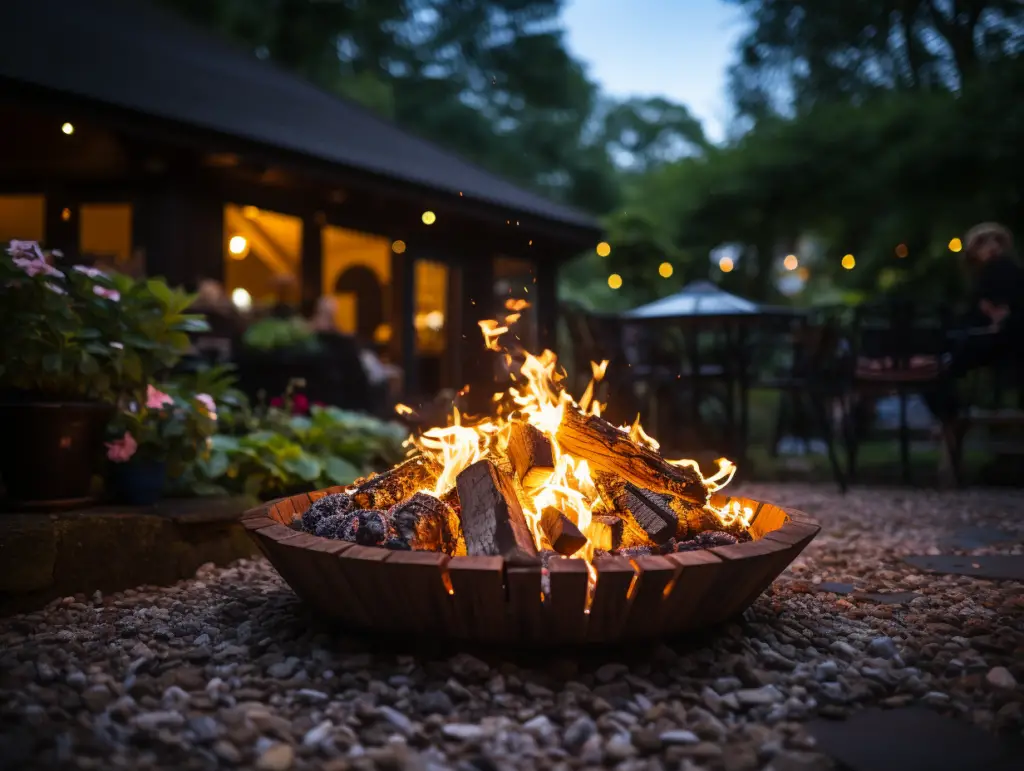
Fire pit placement is crucial to ensure safety and prevent any potential hazards. Maintaining a proper distance from the house, property line, and other structures is essential.
Here’s a 4-step guide to help you determine the right fire pit distance:
1. Consider local regulations and codes: Check with your local authorities to identify any specific guidelines or regulations regarding fire pit placement. Some areas may have specific requirements for the distance between the fire pit and structures.
2. Assess the surroundings: Evaluate the area where you plan to install the fire pit. Look for any potential combustible materials, such as overhanging branches, shrubs, or fences. It’s important to keep the fire pit a safe distance away from flammable objects.
3. Keep a safe distance from structures: Generally, it is recommended to place the fire pit at least 10-20 feet away from the house, property line, or any other structures. This distance helps reduce the risk of heat-related damage, such as fire or melted siding.
4. Consider wind patterns: Take into account prevailing wind patterns in your area. If the wind tends to blow towards certain structures, increase the distance accordingly to prevent smoke or embers from reaching them.
Remember, these recommendations serve as a general guideline, and specific requirements may vary depending on local regulations and individual circumstances. Always prioritize safety and consult with professionals if needed to ensure proper fire pit distance from the house, property line, and other structures.
Type of Fire Pit
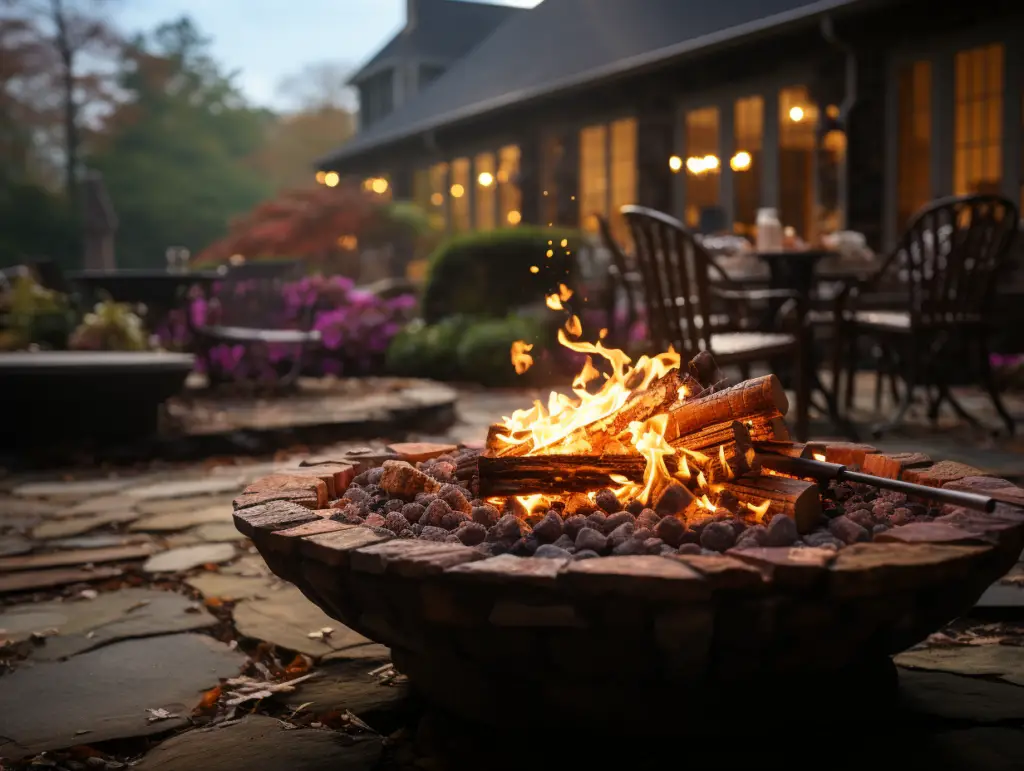
When choosing the best fire pit for your home, various options are available to consider. Understanding the different types can help you make an informed decision that suits your needs and preferences. Here are six key points to help you navigate the world of fire pits:
1. Wood-Burning Fire Pit: These traditional fire pits provide a cozy and rustic ambiance. They require wood as fuel and are a popular choice for those who enjoy the crackling sounds and aromatic scents of burning wood.
2. Gas Fire Pit: For a more convenient and controlled fire experience, a gas fire pit is a great option. These fire pits use natural gas or propane, providing instant heat and adjustable flames with the flip of a switch.
3. Portable Fire Pit: If flexibility is important to you, a portable fire pit is the way to go. These lightweight and compact fire pits can be easily moved around your outdoor space or even taken with you on camping trips.
4. Fire Pit Table: Combining functionality and aesthetics, fire pit tables offer a dual purpose. They provide warmth and a focal point for social gatherings while also serving as a practical surface for placing drinks and snacks.
5. Chiminea: Perfect for smaller spaces or those looking for a unique design, chimineas are freestanding fire pits with a chimney-like structure. They radiate heat efficiently, making them an excellent choice for cooler evenings.
6. Smokeless Fire Pit: If you enjoy spending time by the fire without the inconvenience of smoke, a smokeless fire pit is worth considering. These innovative designs use advanced airflow technology to minimize smoke production.
In addition to the key points above, it is essential to consider other factors such as size, materials, and safety features when selecting the right type of fire pit for your home. By understanding the distinctions between these various options, you can confidently choose the type of fire pit that best suits your preferences and enhances your outdoor space.
Operation Guidelines
To ensure safety and proper operation when using a fire pit near your house, it is crucial to follow certain guidelines. Below is a summary of the key considerations:
| Distance from House | Minimum 10 feet |
| Clearance from Overhanging Structures | Minimum 25 feet |
| Surrounding Materials | Avoid flammable materials such as dry grass, leaves, and branches |
| Fire Pit Placement | On non-combustible surfaces like concrete, brick, or gravel |
| Supervision | Constant supervision is required |
In addition to the above guidelines, it is important to ensure that there are no flammable objects or materials in the vicinity of the fire pit. This includes keeping a safe distance from trees, shrubs, or any other potential sources of fuel. Always have a fire extinguisher or water source nearby in case of emergencies.
True story:
A couple in our neighborhood recently disregarded the recommended fire pit guidelines. They placed their fire pit too close to their house on a wooden deck, resulting in a dangerous fire incident. Thankfully, the fire department intervened in time, preventing any major damages.
This incident serves as a reminder of the importance of following proper operation guidelines to avoid such risks.
Conclusion
According to the reference data, determining the appropriate distance for a fire pit from a house is crucial. It is essential to prioritize safety by considering factors such as local regulations and the materials used for the fire pit.
Additionally, the importance of maintaining a clear space around the fire pit should be emphasized to prevent any potential hazards. Taking these considerations into account will help ensure a safe and enjoyable fire pit experience.
As for a pro tip, it is advisable to regularly inspect and clean the fire pit to prevent the buildup of debris, which can pose a fire risk.
Some Facts About How Far Should a Fire Pit Be From a House:
- ✅ Many local laws require a clearance of at least 10-25 feet above the fire pit to accommodate overhead branches. (Source: Team Research)
- ✅ A fire pit should be placed at a safe distance from buildings, sheds, fences, bushes, trees, and shrubs to prevent fire hazards. (Source: Team Research)
- ✅ It is essential to be mindful of the property line and adhere to the regulations regarding the distance between the fire pit and the border of your property. (Source: Team Research)
- ✅ An in-ground fire pit should be lined with non-combustible materials like heavy gauge metal or brick and mortar. (Source: Team Research)
- ✅ It is recommended to build a non-combustible base at least ten inches deep underneath the fire pit using materials like rock, sand, or gravel. (Source: Team Research)
FAQs about How Far Should A Fire Pit Be From A House?
How far should a fire pit be from a house?
The fire pit should be placed at a safe distance from the house to prevent any fire hazards. The specific distance varies depending on local regulations.
It is recommended to check the guidelines in your area. Additionally, the fire pit should be a clearance of at least 25 feet above to avoid any issues with overhead branches and potential wind direction pushing toxic fumes toward the house.
Can I have a fire pit close to my property line?
Many places have restrictions on how close a fire pit can be to the border of your property. The distance allowed varies depending on your county or municipality. It is essential to check the specific regulations in your area to ensure compliance.
What are the requirements for the type of fire pit?
The fire pit should have enclosed sides that are at least 6-12 inches high and made of non-combustible materials such as heavy-duty metal, brick, or stone. If building an in-ground fire pit, it must be lined with non-combustible materials like heavy gauge metal or brick and mortar.
The fire pit should also have a non-combustible base, at least ten inches deep, made of materials like rock, sand, or gravel. Adding a border around the fire pit, made of sand or gravel, is recommended to contain any burning debris that may accidentally fall outside the burning area.
What are the operation guidelines for a fire pit?
When prepping the fire pit area, it is important to remove any combustible materials within 15 to 25 feet of the pit. A responsible adult should always tend to the fire until it is completely extinguished. It is advisable to have a mesh screen cover on hand to contain sparks and embers.
Additionally, fire suppression equipment such as a fire extinguisher, garden hose, water buckets, and sand should be readily available near the fire pit.
Can I have a fire pit in my backyard if I live in an urban area or high fire hazard zone?
Urban areas, places with poor air quality, and high fire hazard zones may have stricter rules regarding burning. Some areas may have a permanent burn ban in place or require the use of fuelled fire pits instead of wood-burning ones.
It is crucial to check the local ordinances in your area to determine if you are allowed to have a fire pit and what specific regulations apply.
Do I need to consider power lines when placing a fire pit?
Avoid placing the fire pit underneath any power lines. Power lines pose a significant electrical hazard and can potentially ignite a fire if in close proximity to the heat and flames of the fire pit. Ensure the fire pit is a safe distance away from any power lines to mitigate this risk.

![What Gravel To Use For Patio Base [Best Options]](https://www.cleverpatio.com/wp-content/uploads/2021/11/What-Gravel-To-Use-For-Patio-Base-270x180.jpg)

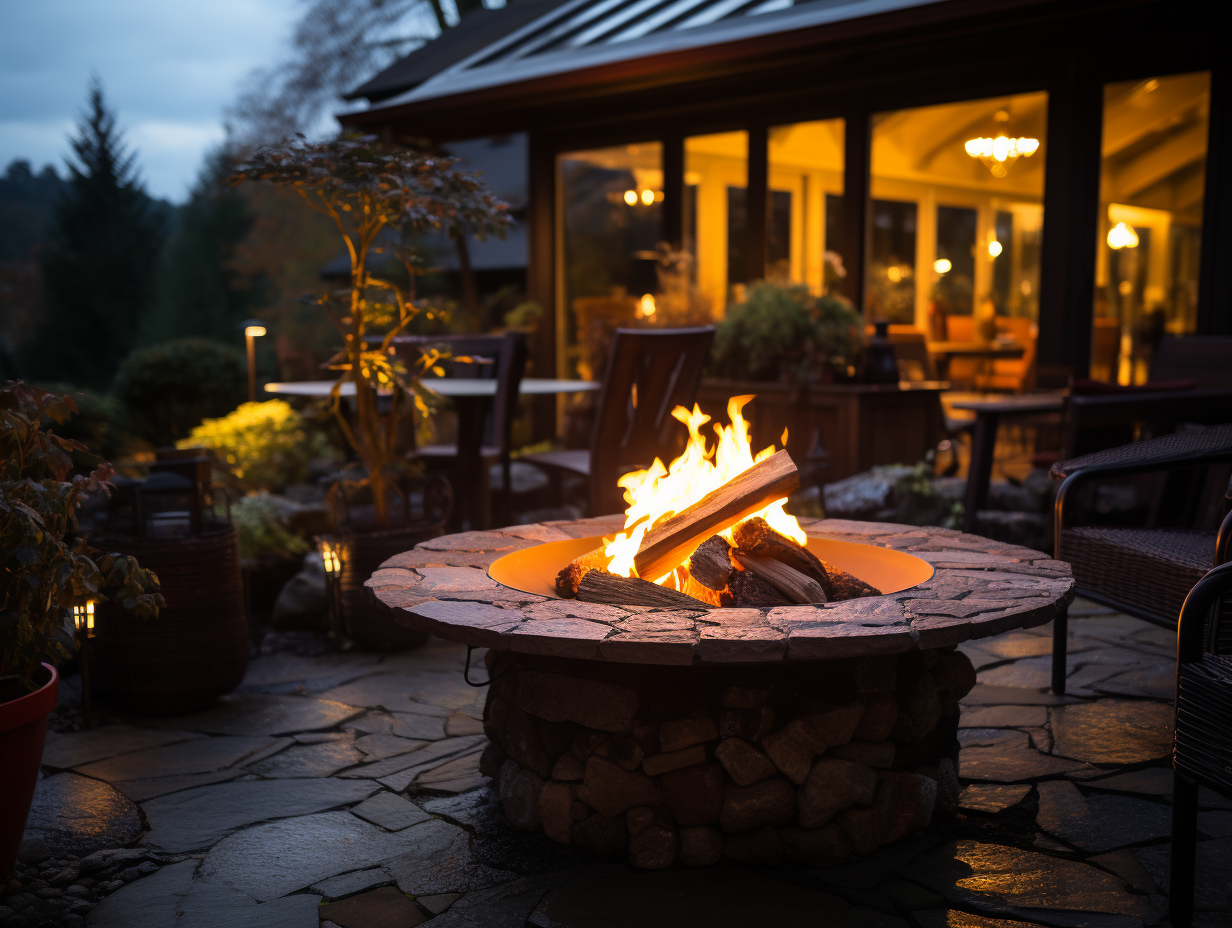
Leave a Reply